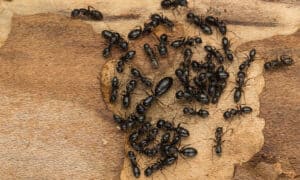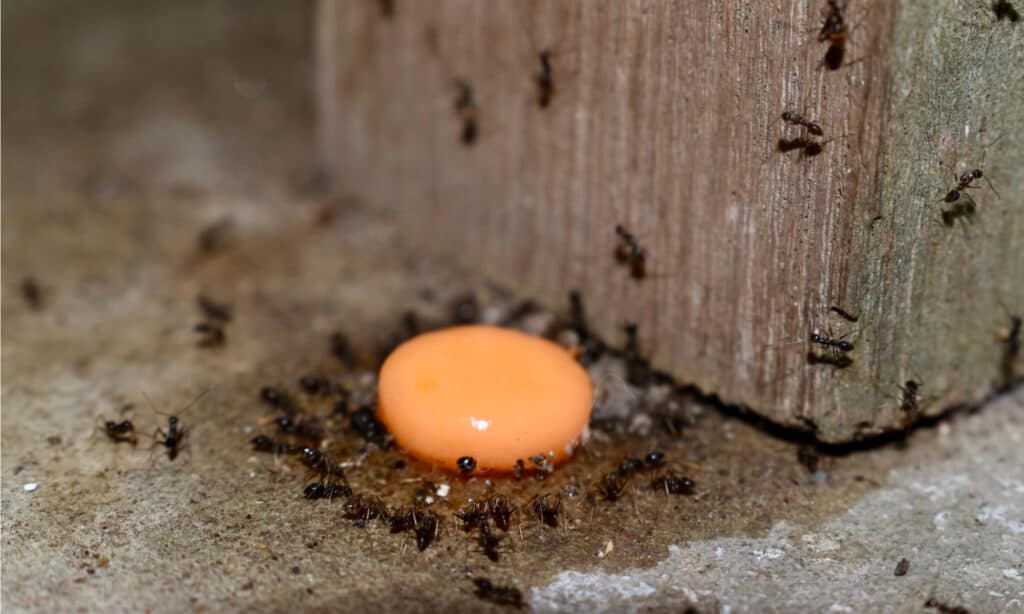
Ants are resourceful, intelligent creatures and perhaps one of the most interesting insects on the planet.
©Zay Nyi Nyi/Shutterstock.com
There are many interesting insects in the world, and the ant is certainly one of them. They are tiny, dispersed everywhere, and, are often invading your kitchen. More than 10,000 ant species have been identified. Most of these insects may be found in tropical woods, where they make up as much as half of the total insect population. Even though we may take common ants for granted, a little investigation reveals that they might perhaps be the most versatile and interesting insects on the planet.

Let’s explore 10 incredible Ant facts together!
1. They Are As Old As Dinosaurs!

Ants are thought to have evolved during the Cretaceous period.
©Raj Nirala Art/Shutterstock.com
Ants are a far older species than humans. The ants are ancient. According to scientists, ants have existed for millions of years. This indicates that ants and dinosaurs like the Tyrannosaurus Rex, Triceratops, and Velociraptor coexisted on the same planet. Ants, despite their diminutive size, survived both the cold age and the great extinction that wiped off the dinosaurs. Ants are thought to have evolved between 110 and 130 million years ago, towards the middle of the Cretaceous period.
2. Scientists Believe They Are The Smartest of Insects
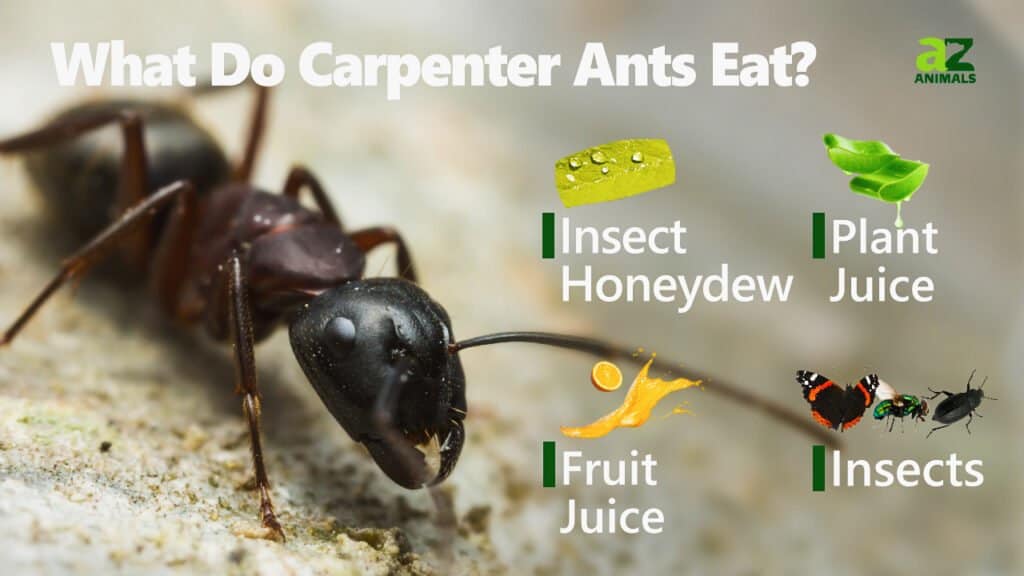
Even though an ant’s brain is relatively insignificant compared to a human’s, experts still believe that ants have the greatest brains of all insects. Ants are thought to be the smartest insect in the world and have a total of 250,000 brain cells. Regardless of how intelligent they are, ants can communicate, evade and fight off threats, hunt for food, display courtship behaviors, and use intricate navigation over great distances.
3. Worker Ants Keep A Tight Schedule
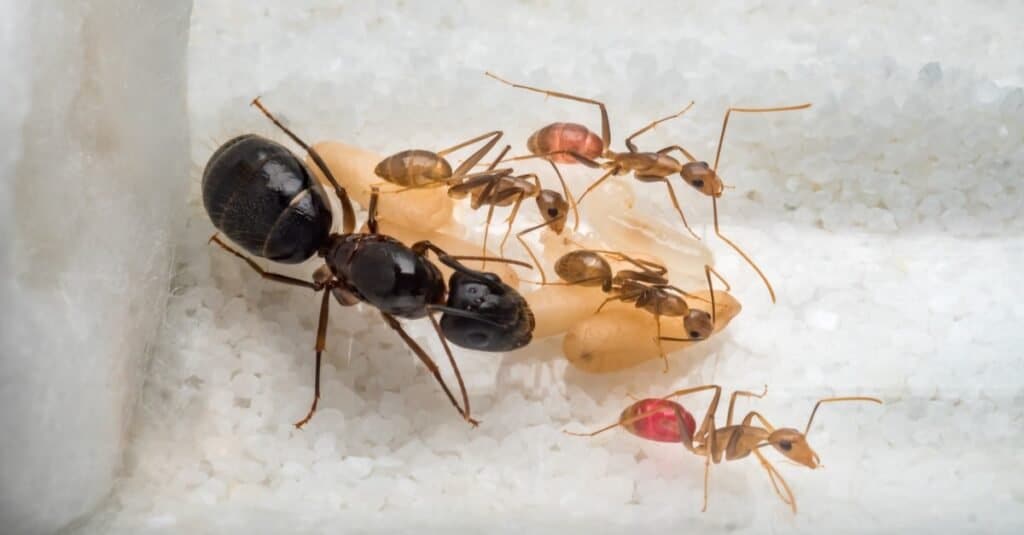
Worker Carpenter ants (Camponotus sp.) taking care of the queen ant, eggs, larva and pupae in test tube.
©Poravute Siriphiroon/Shutterstock.com
Ants sleep less than the 8 hours a night that is advised for humans, more like a power nap. Numerous investigations have revealed that ant colony workers typically take 250 one-minute naps every day, or 8 minutes of sleep every 12 hours. Ants follow set daily schedules for feeding, sleeping, and working. When they awaken, they even yawn and stretch just like us without using any profanities.
4. Ants Rarely Drown
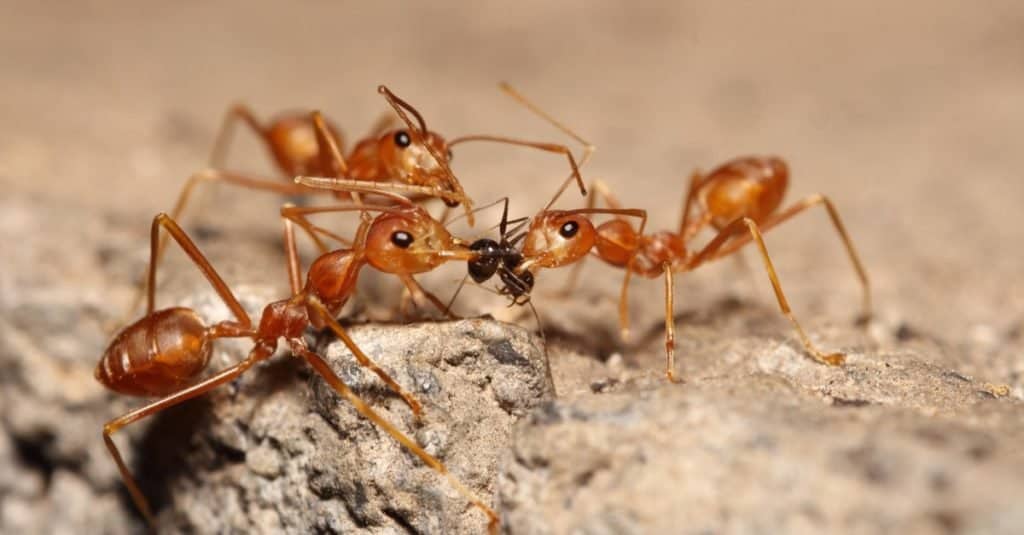
Ants can survive underwater for up to two weeks.
©sarawuth wannasathit/Shutterstock.com
Avoid attempting to drown ants since they have incredibly tiny breathing tubes that water cannot penetrate, allowing them to survive underwater for up to two weeks. Many people believe that drowning or smothering ants will get rid of them. These ant extermination techniques are ineffective simply because ants lack lungs. Even while they don’t necessarily hold their breath when caught in a flood, ants do close their spiracles.
5. Ants Live The Longest Of All Insects
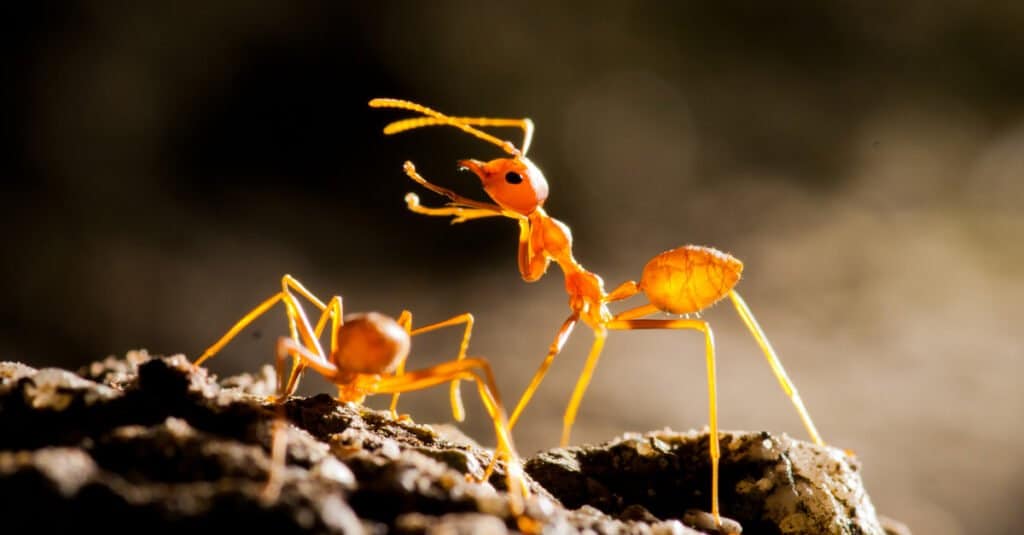
Another example of incredible facts about ants is that they’re the longest-living insect species!
©Mixrinho/Shutterstock.com
Ants can live up to 30 years, making them the longest-living insect species. Some queens have been known to live past the age of 15, and some have even been found to be 28! Additionally, most workers and soldiers live a long time. Female working ants are only able to work and serve their queen for a few months at a time before they die. The queen of an ant colony can live for an exceptionally long time—some have even reached their 30th year!
6. Some Ant Species Can Cause Expensive Damage
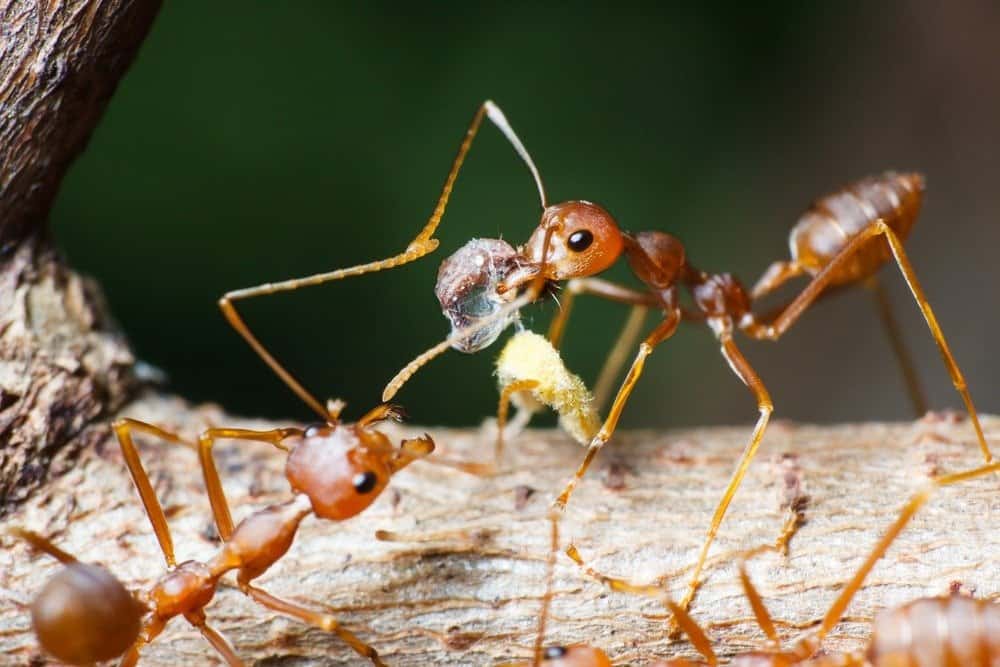
Red fire ants have the potential to cause extensive damage.
©Deer worawut/Shutterstock.com
Red imported fire ants have the potential to harm many different sorts of property, including agricultural issues, structural issues with buildings, and electrical equipment damage. They damage property worth hundreds of millions of dollars every year just in the U.S. Each year, fire ants alone do $5 billion in damage in North America.
7. One Species Of Ant Can Actually Clone Itself!
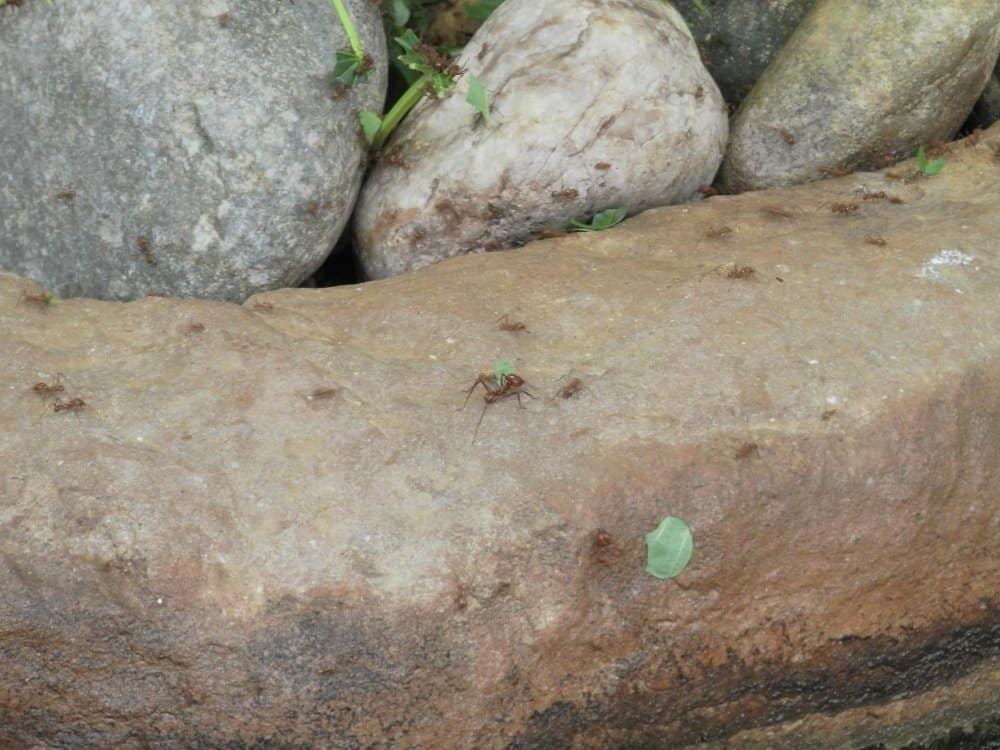
Leaf-Cutter ants are able to clone themselves.
©Millie Bond – Copyright A-Z Animals
Recently, a species of ant with only females was found. These leaf-cutter ants clone themselves to reproduce. Researchers have discovered that an Amazonian ant has abandoned sex and evolved into an exclusively female species. The queen ants replicate themselves to generate genetically identical daughters, which is how the ants reproduce.
8. Ants Have Gender Species Roles In Their Colonies
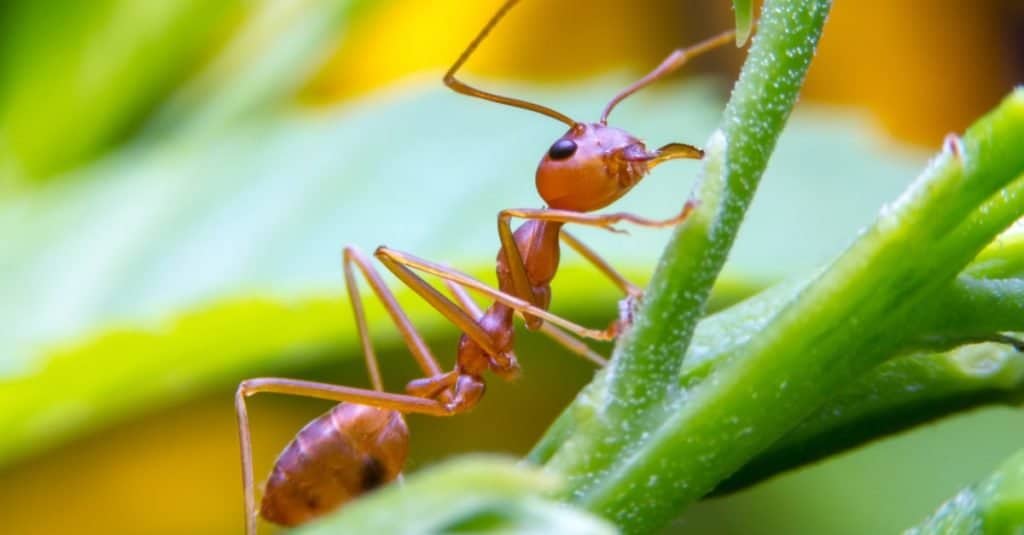
Fire ant colonies are typically comprised of female worker ants and one queen, who is responsible for laying the eggs.
©wnarong/Shutterstock.com
The colony’s founder, the queen, is responsible for egg production. All worker ants are female, and this sisterhood is what keeps the colony running smoothly. Each female ant is either a worker, soldier, or queen. Only male drones exist. Drones just have one job: to fertilize a princess ant. They don’t perform any colony activity. They pass away shortly after.
9. Ants Can Sense The Earth’s Magnetic Field, And Use It For Navigation
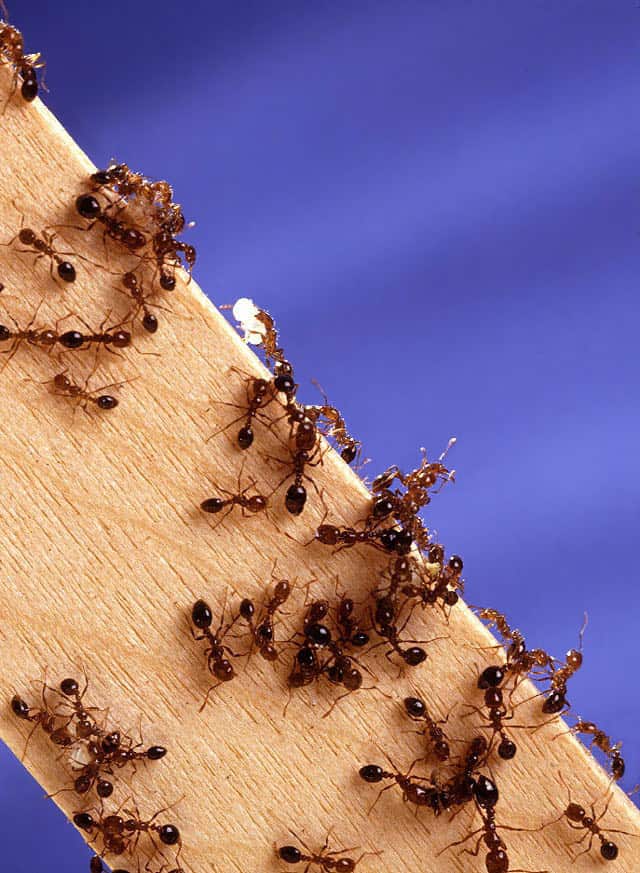
Ants rely on the geomagnetic field for orientation and navigation.
©Scott Bauer / Public domain, from Wikimedia Commons, the free media repository – Original / License
Ants and other social insects can use information from the geomagnetic field to aid with orientation and navigation. Little research, however, has examined the impact of magnetic fields on ant foraging behaviors like orientation and decision-making. Ants that are drawn to the electric fields created by the device might harm electrical equipment.
10. Ants Use Their Sense Of Smell For Specific Reasons
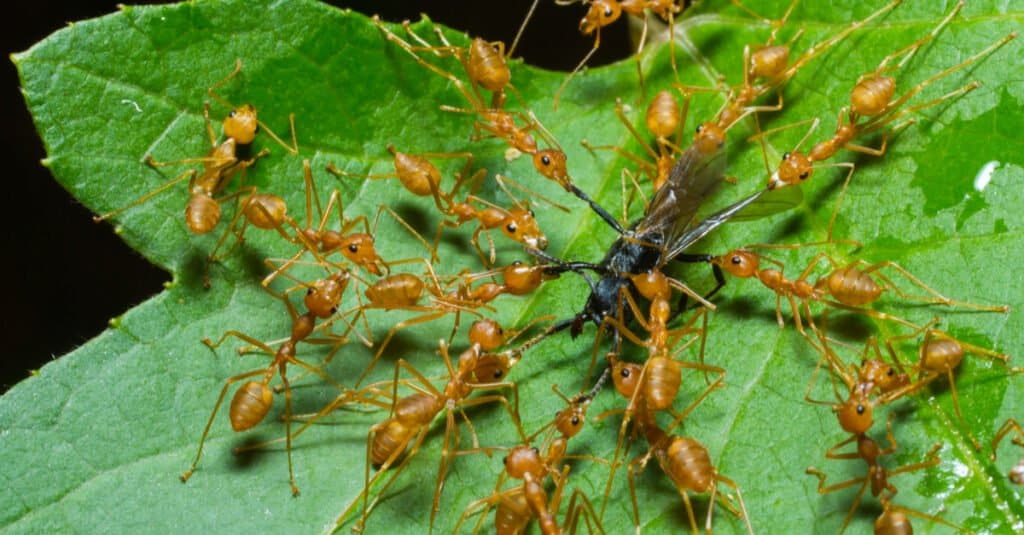
Ants communicate with one another through pheromones, noises and touch.
©boyphare/Shutterstock.com
Because each ant colony emits a distinct aroma, outside ants can be identified right away. Ants use chemical pheromone trails to communicate with one another. Colonies employ these molecules to cooperate so effectively that they have been dubbed “superorganisms,” which are essentially a collection of interconnected organisms.
Pheromones, noises, and touch are all used by ants to communicate with one another. Ants have a more advanced understanding of the utilization of pheromones as chemical communication than many other insect species. Because ants sense odors via their antennae, just like other insects, they have an amazing and remarkable sense of smell.
Thank you for reading! Have some feedback for us? Contact the AZ Animals editorial team.





